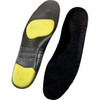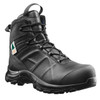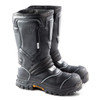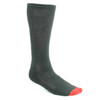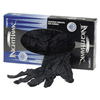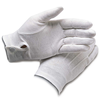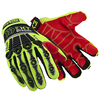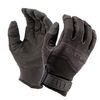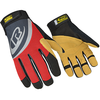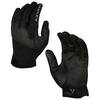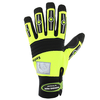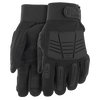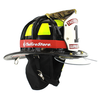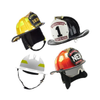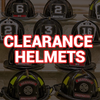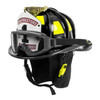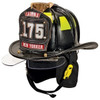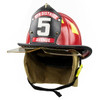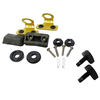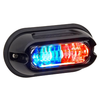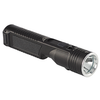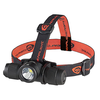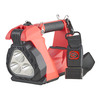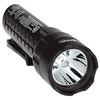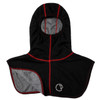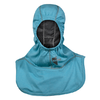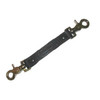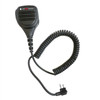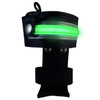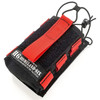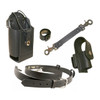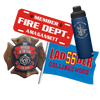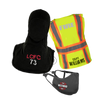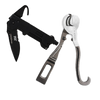HOW TO KEEP TOXIC SOUP FROM SEEPING IN
Posted by Robert Avsec on Mar 25th 2024
When you first cross the plane of that front door at a structural fire, you and your personal protective equipment (PPE) are immediately exposed to a vast number of toxic chemicals, chemical compounds, and carcinogens. Your exposure to that “toxic soup” can result in serious injury or illness including cancer, which is now the leading cause of U.S. firefighter deaths.
For the longest time, the weakest component in the structural firefighting protective ensemble was the protective hood. While it did its job of protecting a firefighter’s ears and neck from thermal heat during interior structural firefighting, the hood offered little in the way of protection from liquids and vapors (e.g., water and steam) as well as particulates (e.g., soot in smoke).
As we've learned more about the skin absorption risk that firefighters face from soot and other particulates during interior structural firefighting those limitations of the protective hood have become increasingly evident.
 The RedZone particulate blocking firefighter hood seals contaminants out. (image/LION)
The RedZone particulate blocking firefighter hood seals contaminants out. (image/LION)
Designed to meet more rigorous standards
That’s why the 2018 edition of NFPA 1971: Standard on Protective Ensembles for Structural Fire Fighting and Proximity Fire Fighting added specifications for manufacturers to work with to develop particulate blocking protective hoods for firefighters: Additional Performance Requirements for Optional Structural Fire Fighting Protective Hood Interface Components Providing Particulate Protection (Section 7.14.1).
LION, a leading manufacturer of quality personal protective equipment (PPE) for firefighters recognized that firefighters needed a better protective hood, one that met the new specifications of NFPA 1971. The key part of those specifications was that a protective hood with a particulate-blocking layer must have a particulate filtration efficiency of 90 percent or greater for each particle size from 0.1 microns to 1.0 micron.
The PPE design engineers at LION created a two-layer hood that uses LION’s exclusive StedAir PREVENT particulate blocker. Their design gives the RedZone particulate blocking hood outstanding breathability, increased air permeability, and unique construction for ease of movement and flexibility. And isn’t that what you’re looking for when you purchase a particulate blocking hood?
When you purchase a RedZone particulate blocking hood, you can be sure that you’re getting a breathable, super-soft hood that protects your head and neck from the hazardous particulates present in today’s smoky structure fires. And it does so while giving you excellent mobility and unrestricted hearing.
Here are three ways the RedZone particulate blocking hood stands out:
Protection. The RedZone particulate blocking hood provides a particulate blocking layer that blocks 98 percent of particulates 0.1 to 1.0 microns in size. NFPA 1971 (2018 edition) specifies that a protective hood should stop at least 90-percent of particulates that size to be considered particulate blocking.
And that level of protection is present throughout the hood (100 percent coverage) so that in the event your helmet becomes dislodged, you’re still protected from heat and particulates.
Durablity. The combination of an outside layer of Kermel/Viscose 9 oz. interlock knit material and the StedAir PREVENT particulate blocker make for an extremely durable hood that keeps up its level of protection from particulates even after 100 launderings. (NFPA 1971 specifies that a particulate blocking hood should still meet the 90-percent performance standard after only 20 launderings).
Systemic Protection. The RedZone particulate blocking hood is the latest addition to LION’s RedZone Contaminant Control Package. The combined elements of that package, which is certified to meet NFPA 1971, raise a firefighter’s level of protection from both particulates and vapors to a higher level by addressing identified points-of-entry for those contaminants such as the interfaces between elements of the protective ensemble (e.g., glove/coat interface or the coat/pants interface).
The hazard levels from chemicals, chemical compounds, carcinogens, and particulates present in the smoke at today’s structure fires are greater than ever. Shouldn’t your firefighting protective hood be up to the challenge?


